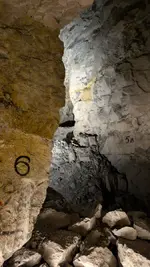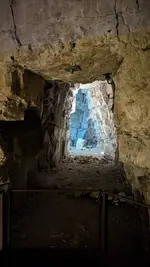Part two: War, what is it good for.
So we are in Arras with the sole reason of researching my late uncles. My brother had done the family tree years ago but there wasn't much detail and he had made a couple of mistakes. My mother had died in 1997 and she had loads of photos some were obviously very old but were like postcards.
One was of a gravestone of my mother's grandparents.

Under was a mention of William Wilkinson of the East Yorkshire Regiment with the date 5th November 1916. From here it was easy to trace where the regiment were etc.
William was in the 7th Battalion of the East Yorkshire regiment. On the 5th November 1916, during the Battle of the Somme, William died attacking the Germans at Le Transloy.

A photo of who I believe is William as it was kept with the above picture of the grave.
Reading the orders received the evening before is interesting.

Williams company attacked in the morning and this seems to have failed quite quickly. The next company attacked at 10pm but a notice was received at ten to nine not to go ahead if the attack had failed in the morning.


He is remembered along with thousands of others at the Thiepval Memorial. So we set off here the next day.

I had the location of his inscription from the war graves commision website.
The place is vast. There are 72337 missing soldiers rembered here and this is just from the Somme.

The other grandparents of my mother on her father's side was a mention of Albert Linwood who died 9th April 1917. I found a regiment diary from his regiment which had them at Ronville tunnels in Arras the day before he died.






After more "digging" these tunnels where old mining tunnels hundreds of years old where the stone to build Arras was taken from.
In Arras there is now a museum where you can enter these tunnels. These tunnels are the same as when Albert went through them in 1917.
I thoroughly recommend a visit to these tunnels.





They were used again during WW2 as air raid shelters. The tunnels went far into no mans land and sometimes right up to where the German troop were dug in. When the soldiers appeared from the tunnels a lot of Germans surrendered or ran away.
It seems they were attacking a place called Telegraph Hill. Albert was reported missing on the 9th and his body was found on the 10th of April near to Telegraph Hill.
I managed to find Telegraph Hill by comparing the WW1 maps and Google. Amazingly Telegraph hill is still there, mainly due to the concrete bunkers that are still in place, meaning it cannot be used for farmland.





Albert was identified by his personal possessions which included a picture of his wife Hetty Clipson, who he had married before he went to war the previous year.
Alberts remains were buried at the Tilloy British War Memorial. We went to visit and after a short search found his grave.



One was of a gravestone of my mother's grandparents.

Under was a mention of William Wilkinson of the East Yorkshire Regiment with the date 5th November 1916. From here it was easy to trace where the regiment were etc.
William was in the 7th Battalion of the East Yorkshire regiment. On the 5th November 1916, during the Battle of the Somme, William died attacking the Germans at Le Transloy.

A photo of who I believe is William as it was kept with the above picture of the grave.
Reading the orders received the evening before is interesting.

Williams company attacked in the morning and this seems to have failed quite quickly. The next company attacked at 10pm but a notice was received at ten to nine not to go ahead if the attack had failed in the morning.


He is remembered along with thousands of others at the Thiepval Memorial. So we set off here the next day.

I had the location of his inscription from the war graves commision website.
The place is vast. There are 72337 missing soldiers rembered here and this is just from the Somme.

The other grandparents of my mother on her father's side was a mention of Albert Linwood who died 9th April 1917. I found a regiment diary from his regiment which had them at Ronville tunnels in Arras the day before he died.






After more "digging" these tunnels where old mining tunnels hundreds of years old where the stone to build Arras was taken from.
In Arras there is now a museum where you can enter these tunnels. These tunnels are the same as when Albert went through them in 1917.
I thoroughly recommend a visit to these tunnels.





They were used again during WW2 as air raid shelters. The tunnels went far into no mans land and sometimes right up to where the German troop were dug in. When the soldiers appeared from the tunnels a lot of Germans surrendered or ran away.
It seems they were attacking a place called Telegraph Hill. Albert was reported missing on the 9th and his body was found on the 10th of April near to Telegraph Hill.
I managed to find Telegraph Hill by comparing the WW1 maps and Google. Amazingly Telegraph hill is still there, mainly due to the concrete bunkers that are still in place, meaning it cannot be used for farmland.





Albert was identified by his personal possessions which included a picture of his wife Hetty Clipson, who he had married before he went to war the previous year.
Alberts remains were buried at the Tilloy British War Memorial. We went to visit and after a short search found his grave.






















